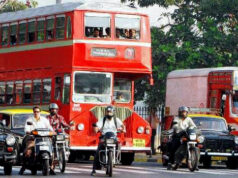This morning, I read about the Dost, a 1.25 ton commercial vehicle launched today that will be produced through a joint venture between Ashok Leyland and Nissan and priced from Rs 3.79 lakh. That got me thinking about the market for light commercial vehicles (LCVs, the category into which the Dost will fall) and then for cars in general. And that made me start to ask lots of questions. How many different models of car are available in India? How many different LCVs are there? How much do they cost? Which ones are better? Is Rs 3.79 lakh a good deal, or are there better ones out there? What about for regular passenger cars? How good is that super-affordable Nano?
No one knows how many different makes and models of car there are in India, because there are really too many to count. One website I found listed at least 150, but I don’t think that was exhaustive. And even among those 150, there are endless variations. And it those were just passenger cars. There were no LCVs or heavy commercial vehicles. There were definitely no autos. And everything’s available in multiple colours. When you start to think about it, the options available for someone wanting to purchase a vehicle are almost endless.
Miraculously, out of this vast array of choices, millions and millions of people, all with different preferences, manage to choose cars that fit their needs – that have enough room for their families, that fit in the parking spaces available near their homes, that will transport what they need to transport, that will have more power or use less fuel.
It sounds like a recipe for total chaos. After all, no one’s coordinating the supply of cars. No one’s calculating how many cars are needed, who needs MUVs and who needs Nanos, how many prefer black cars to red. No one’s monitoring the car companies to make sure they produce the right mix. It’s millions of people shopping for cars and dozens of manufacturers producing scores of models. And yet, somehow, it just works. And not only does it work, but new cars are added to the mix all the time, and new consumers are constantly entering the market. More and more people who have never had a car find they’re able to afford a new, inexpensive model. Car companies are constantly changing and offering new and different and better options. It’s dynamic and exciting.
It hasn’t always been this way. In 1909, Henry Ford famously said about the Model T that, “Any customer can have a car painted any colour he wants so long as it is black.” Even just 20 years ago, choices in India were far more limited than they are today, with only a few big manufacturers. But in 1991, the process of economic liberalisation began and the number of different cars available has exploded.
No one doubts that this is good for consumers. We’re all better off because we have more choices and, consequently, can get something that better meets our needs. Quality has improved and extra features have become more affordable. And it’s also good for loads of workers. All those cars mean jobs in manufacturing them and selling them, in cleaning them and driving them, in filling them with fuel, replacing their tyres, and fixing them when they break down.
So into this mix comes the Dost, and I welcome it. I don’t know whether it will be successful or not – that’s up to the consumers who will decide whether to purchase it or one of the other LCVs on the market – but its introduction indicates a vibrant market that is good for Indian consumers and workers. It shows me that the liberalisation that started in the ‘90s is continuing to bear fruit. It reveals continued growth and development of the economy, and when the economy grows, we all benefit.
Post Disclaimer
The opinions expressed in this essay are those of the authors. They do not purport to reflect the opinions or views of CCS.





